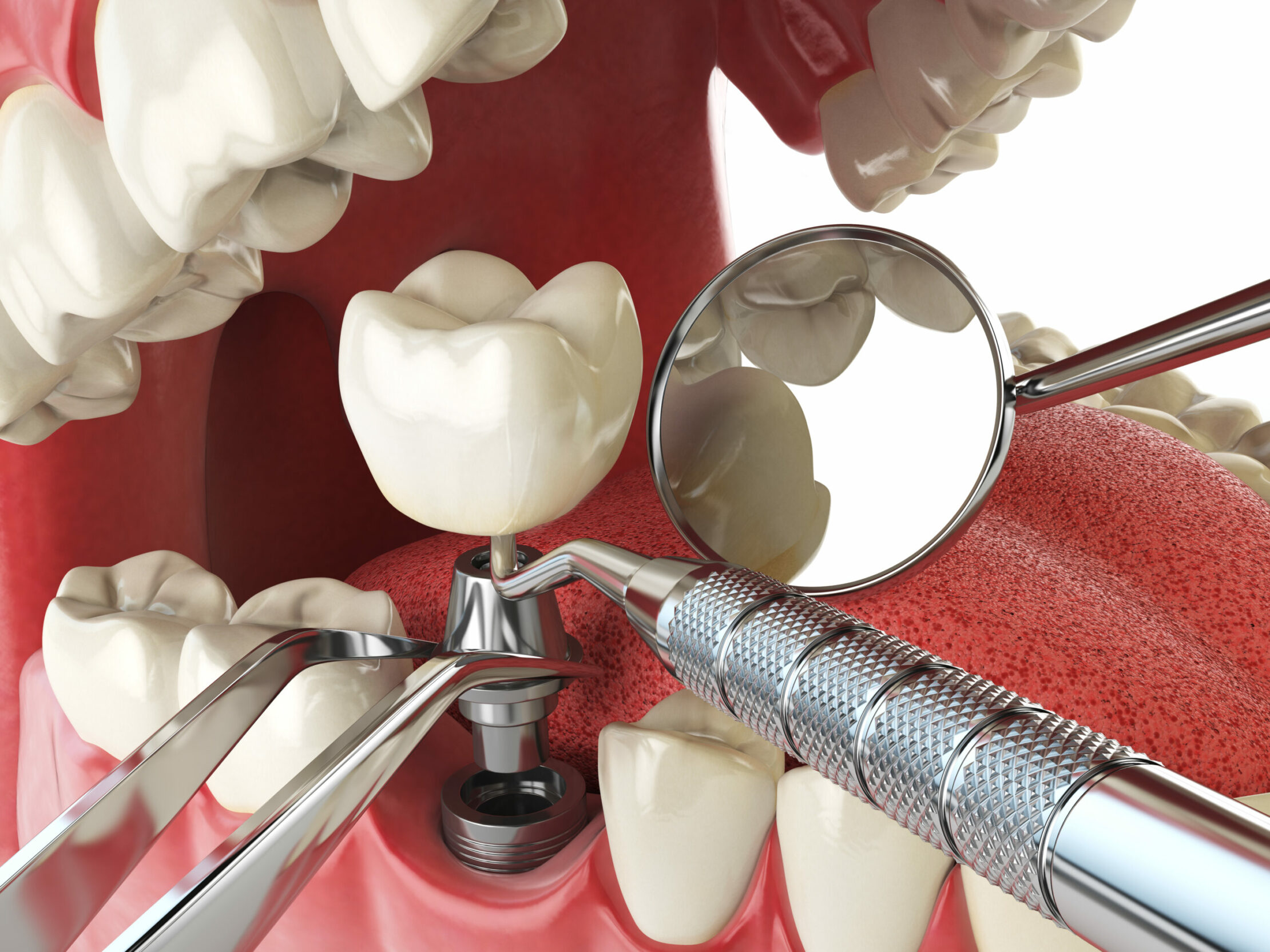Experience the most recent Developments in Oral Implants Modern Technology
As the area of dental care continues to evolve, the innovations in dental implant modern technology have actually been absolutely nothing brief of impressive. The combination of innovation is changing the performance of dental implants, guaranteeing enhanced outcomes and individual contentment.
Advanced Materials for Enhanced Toughness
In the realm of dental implants innovation, the combination of sophisticated materials has actually significantly added to improving resilience and longevity of these important dental prosthetics. The application of products such as titanium alloys, zirconia, and ceramic substances has actually changed the field by offering raised biocompatibility, strength, and resistance to deterioration.
Titanium alloys are extensively utilized in dental implants due to their outstanding strength-to-weight proportion, deterioration resistance, and compatibility with the body. These alloys ensure the security and longevity of the implant by enduring the forces put in during eating and speaking, giving a dependable option for individuals looking for long lasting tooth replacements.
Zirconia, a sort of ceramic product, has actually acquired appeal for its biocompatibility and all-natural tooth-like look. Its high toughness and resistance to put on make it an appropriate choice for oral crowns and bridges, improving the general visual appeals and performance of the implant.

Digital Imaging for Specific Positioning
The development of oral implants modern technology has actually even more progressed with the assimilation of digital imaging techniques, ensuring precise placement of these prosthetics for optimum practical and visual end results. Digital imaging plays a vital duty in the planning and placement of dental implants by offering in-depth 3D photos of the patient's jawbone framework. This technology allows dentists to analyze bone density, find crucial structures, and intend the specific setting and angle for dental implant placement with unrivaled accuracy.
By using digital imaging, dental professionals can produce digital surgical guides that function as a roadmap throughout the dental implant placement procedure. These overviews are tailored for each and every client, thinking about their special composition and the wanted outcome. This degree of accuracy not only enhances the success rate of dental implant treatments but also reduces the threat of difficulties.
Furthermore, digital imaging makes it possible for dentists to imagine the final prosthetic remediation before the actual placement of implants, permitting careful preparation and making sure that the result meets the patient's aesthetic expectations. Generally, the assimilation of digital imaging innovation has actually revolutionized the area of oral implants, offering clients a more predictable, efficient, and patient-specific therapy strategy.

Minimally Invasive Surgical Strategies


Developments in surgical strategies have brought about the growth of minimally intrusive techniques in the field of oral implantology. These techniques intend to lower trauma to the patient, shorten healing times, and improve overall therapy end results. Minimally intrusive operations involve smaller cuts, specialized instruments, and advanced imaging modern technologies to specifically position dental implants with minimal disturbance to surrounding tissues.
One trick aspect of minimally intrusive techniques is using have a peek at this site led surgical treatment, where 3D imaging and computer-aided layout software program are used to plan the dental implant placement with wonderful precision. This enables an extra foreseeable end result and can frequently remove the demand for considerable flap surgery.
Additionally, innovations in products and dental implant layout have additionally added to the success of minimally intrusive approaches. Implants with enhanced surface area homes promote quicker osseointegration, decreasing the recovery time called for before the prosthetic reconstruction can be put.
3D Printing for Custom-made Solutions
Using 3D printing modern technology in dental implantology enables for the creation of highly personalized remedies customized to specific client needs and anatomical variations. This innovative innovation allows dental professionals to make and make dental implants with remarkable precision and precision. By utilizing electronic imaging methods, such as cone beam calculated tomography (CBCT), comprehensive 3D models of the person's oral cavity can be created to direct the implant preparing procedure.
One of the key benefits of 3D printing in dental implantology is the capacity to produce patient-specific implants that perfectly fit the unique composition of each individual. This customized approach aids enhance the general success and long life of the dental implant by making certain ideal fit and positioning. Additionally, 3D printing enables the production of intricate geometries and detailed structures that would be tough or impossible to achieve using traditional production techniques.
Furthermore, 3D printing technology allows dental practitioners to simplify the implantation procedure, lowering surgery time and enhancing general client experience. With its capacity to create tailored remedies swiftly and efficiently, 3D printing is revolutionizing the area of dental implantology, offering individuals ingenious treatment options and improved end results.
Integrated Innovation for Improved Performance
Executing advanced modern technology in oral implantology improves performance and precision, elevating the criterion of treatment for individuals going through dental implant procedures. Integrated modern technology plays a crucial function in improving the overall success and durability of oral implants.
Moreover, the integration of computer-aided style and computer-aided production (CAD/CAM) modern technology enables the development of custom-made dental implant remediations with phenomenal precision. CAD/CAM systems utilize digital perceptions to create prosthetics that flawlessly fit the person's special makeup, ensuring optimal convenience and functionality. Furthermore, making use of robotic-assisted surgical procedure additional hints in implant placement enhances precision and minimizes the risk of human error.
Conclusion
To conclude, the most current technologies in oral implants modern technology deal boosted informative post longevity via innovative products, specific positioning with electronic imaging, minimally intrusive medical strategies, tailored options with 3D printing, and boosted functionality with integrated modern technology - Dental implants Kent. These improvements in dental implants modern technology are transforming the field and offering individuals with more efficient and reliable therapy choices for recovering their smiles and oral health and wellness
The integration of technology is changing the performance of dental implants, assuring enhanced outcomes and individual satisfaction.
The development of dental implants innovation has better advanced with the assimilation of digital imaging strategies, guaranteeing specific positioning of these prosthetics for ideal useful and aesthetic end results. Minimally invasive medical treatments include smaller sized incisions, specialized instruments, and progressed imaging innovations to specifically place oral implants with very little disturbance to bordering tissues.
Carrying out cutting-edge innovation in dental implantology improves functionality and accuracy, elevating the criterion of treatment for patients going through dental implant treatments. Dental implants Kent. Integrated modern technology plays an important duty in boosting the overall success and sturdiness of oral implants